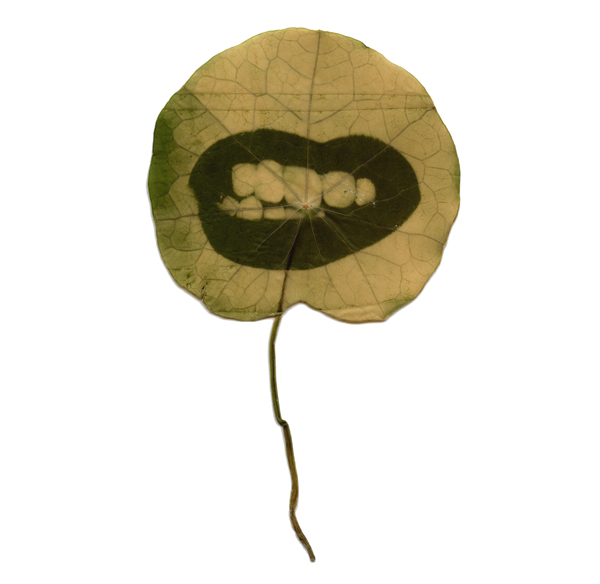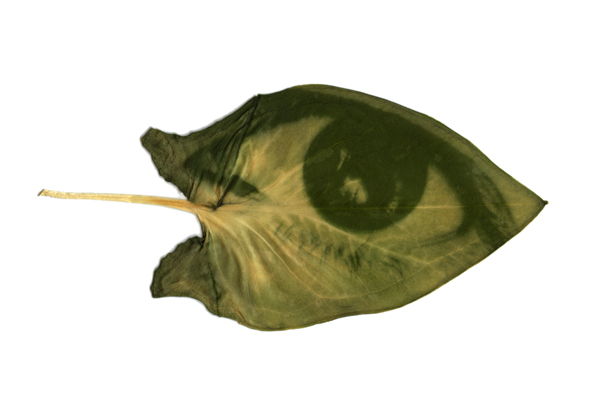I used to print photos in my darkroom, but now my studio is outside in the full sun. I make chlorophyll prints; photos printed onto leaves using only sunlight. When I go for a walk I don’t see hills and trees and hedges. I see canvases.

By placing a photo printed onto acetate over a leaf, then leaving it out in the sun for several days, the leaf itself takes the place of photographic paper. Yet no chemicals or electric lights are needed here, just the sun. The leaf is still alive as the photo develops onto it; only drying once the process is over and the print-out is lifted away. Just as the leaf itself had a lifespan, so does the image now printed onto it. These chlorophyll prints are purposely left ‘unfixed’ and chemical free. This means the images continue their slow change whenever they are exposed to sunlight, slowly bleaching to a pale brown and disappearing forever.
I think alternative photographic processes are a great way to engage people in photography and make it more accessible to a wider range of people. Amongst other projects with the BBC and local councils this approach has taken me to Mexico to work with Mayan photographers using pinhole cameras to show that photography doesn’t need to be expensive.

I also like to have some kind of message in my artistic work. I’d been feeling a bit overwhelmed when confronted with the enormity of climate change. I wanted to try to bring these huge issues down to a more personal level.
Whether human, animal or plant, we’re all living bodies under the same sun. This was my starting point. My first experiments with this process in began in 2010, inspired by Binh Danh’s work but entirely self-taught. After three weeks of trial an error I made my first chlorophyll prints – echoing the shape of the stem and leaf with images of my wrist and hand.
Since then I’ve spent the last 2 years researching this process and exploring other echoes between human and plant bodies. Illustrations of brains and x-rays of bones echoing the shapes within the leaf structure; facial features for a surreal moment: ‘What if plants had eyes?’ There’s also a more obvious point here too: the way these images are made illustrates both the power of solar energy and that too much sun damages living cells, plant or human.
Right now I’m preparing these leaves for my first major exhibition of this series – Living Echo – part of the Bristol Festival of Photography 2012. In the coming year I hope to find some nice scientists to work with to make this series into an outreach programme and to develop new creative avenues. The world is full of naturally occurring processes where light constantly makes physical changes. I want to get in there and tweak those existing processes, capture them and strip back photography to its most basic elements.
Links:
Website: www.rachelsokal.com
Facebook: Rachel Sokal
Twitter: @RachelSokal
Leave a Reply